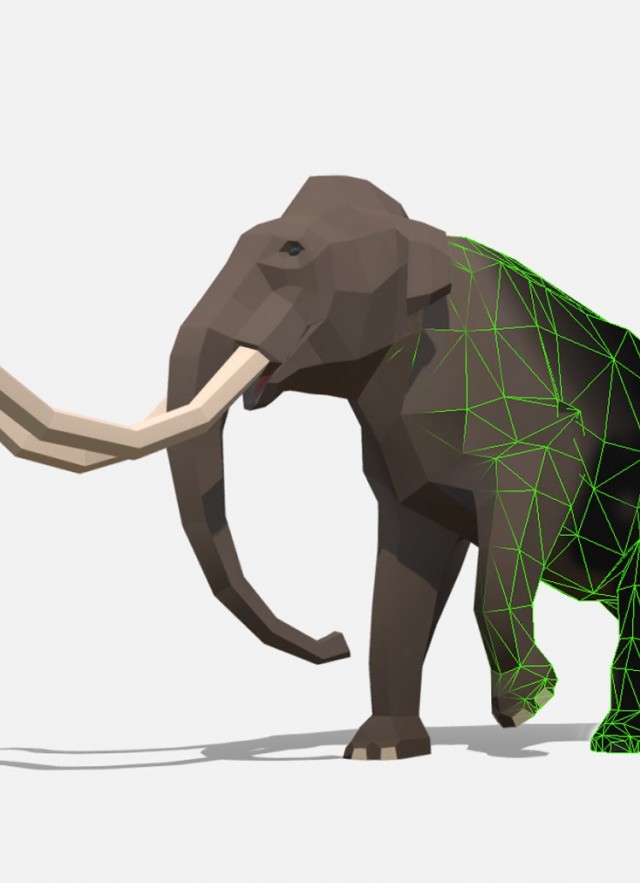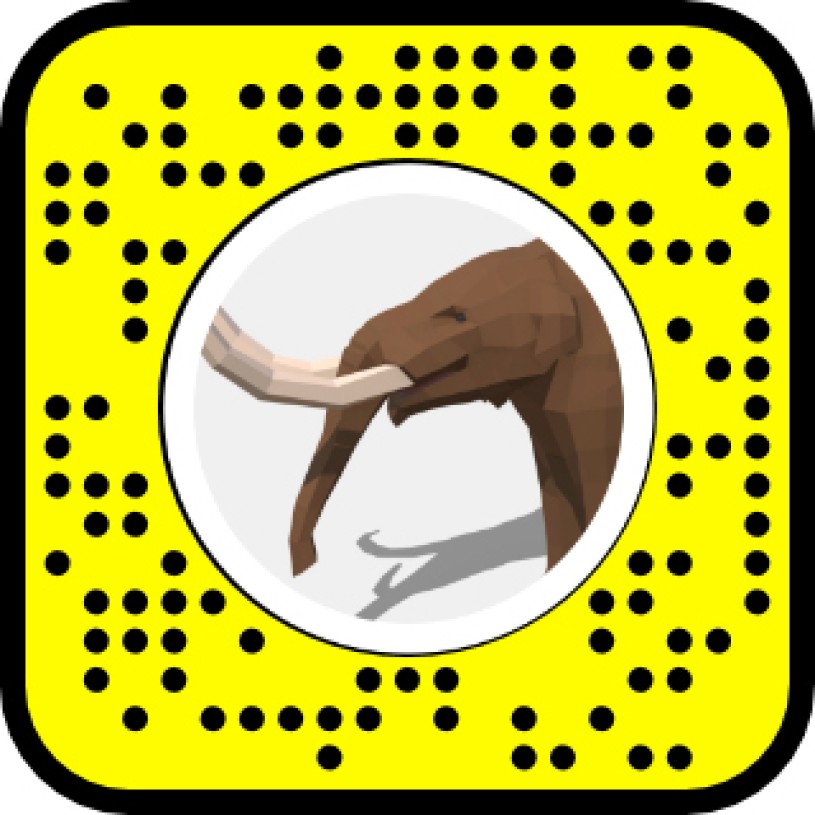Los Angeles, CA (March 2, 2022) — Fearsome dire wolves and saber-toothed cats no longer prowl around La Brea Tar Pits, but thanks to new research, anyone can bring these extinct animals back to life through augmented reality (AR). Dr. Matt Davis and colleagues at the Natural History Museum of Los Angeles County and La Brea Tar Pits collaborated with researchers and designers at the University of Southern California (USC) to create more than a dozen new, scientifically accurate virtual models of Ice Age animals, published recently in Palaeontologia Electronica.
The team is investigating how AR impacts learning in museums, but soon realized there weren’t any accurate Ice Age animals in the metaverse yet that they could use. So, they took all the latest paleontological research and made their own. The models were built in a blocky, low poly style so that they could be scientifically accurate, but still simple enough to run on normal cell phones with limited processing power.
According to study co-author Dr. William Swartout, Chief Technology Officer at the USC Institute for Creative Technologies, “The innovation of this approach is that it allows us to create scientifically accurate artwork for the metaverse without overcommitting to details where we still lack good fossil evidence.”
The researchers hope this article will also bring more respect to paleoart, the kind of art that recreates what extinct animals might have looked like. “Paleoart can be very influential in how the public, and even scientists, understand fossil life.” said Dr. Emily Lindsey, Assistant Curator at La Brea Tar Pits and senior author of the study. A lot of paleoart is treated as an afterthought, though, and not subjected to the same rigorous scrutiny as other scientific research. This can lead to particularly bad reconstructions of extinct animals being propagated for generations in both the popular media and academic publications.
“We think paleoart is a crucial part of paleontological research,” said Dr. Davis, the study’s lead author. “That’s why we decided to publish all the scientific research and artistic decisions that went into creating these models. This will make it easier for other scientists and paleoartists to critique and build off our team’s work.”
Dr. Davis notes that it is just as important to acknowledge what we don’t know about these animals’ appearances as it is to record what we do know. For example, we can accurately depict the shaggy fur of Shasta ground sloths because paleontologists have found a whole skeleton of this species with hair and skin still preserved. But for mastodons, paleontologists have only found a few strands of hair. Their thick fur pelt was an artistic decision. Dr. Davis and colleagues hope that other paleoartists and scientists will follow their example by publishing all the research that goes into their reconstructions of extinct species. It will lead to better and more accurate paleoart for everyone.
This research was funded by an NSF AISL collaborative grant (1811014; 1810984) led by Dr. Benjamin Nye of the USC Institute for Creative Technologies, Dr. Gale Sinatra of the USC Rossier School of Education, Dr. William Swartout of the USC Institute for Creative Technologies, and Dr. Emily Lindsey of La Brea Tar Pits.
EXPERIENCE THESE EXTINCT ANIMALS IN AR
Snapchat
If you have Snapchat, scan these snapcodes to experience these animals in AR.
|
Saber-toothed cat |
Dire wolf |
Shasta ground sloth |
Harlan’s ground sloth |
American lion |
|
Columbian mammoth |
American mastodon |
Western camel |
||
|
Ancient bison |
Dwarf pronghorn |
Western horse |
Teratorn |
Short-faced bear |
PHONE CAMERA
Open your phone camera and scan each code to experience these animals in AR.
|
Saber-toothed cat |
Dire wolf |
Shasta ground sloth |
Harlan’s ground sloth |
American lion |
|
Columbian mammoth |
American mastodon |
Western camel |
||
|
Ancient bison |
Dwarf pronghorn |
Western horse |
Teratorn |
Short-faced bear |
About La Brea Tar Pits
The asphalt seeps at La Brea Tar Pits are the only consistently-active and urban Ice Age excavation site in the world. This makes the site a unique, accessible window into science—where fossils are discovered, prepared, researched, and displayed in one place. Outside, visitors can watch as the remains of plants and animals living over the last 50,000 years are unearthed in real time. Inside the museum, scientists and volunteers clean, repair, and identify those very fossils. The best specimens are displayed and available for research: extraordinary saber-toothed cats, giant sloths, dire wolves, mammoths, and mastodons. But the small fossils are important too. Microscopic plants, insects, and reptiles tell us a lot about the changing ecosystems in which they lived, and we use those insights to investigate climate change today. For further information, visit the museum’s website at TARPITS.ORG.
About the Natural History Museums of L.A. County (NHMLAC)
The Natural History Museums of Los Angeles County (NHMLAC) include the Natural History Museum, La Brea Tar Pits, and the William S. Hart Museum. They operate under the collective vision to inspire wonder, discovery, and responsibility for our natural and cultural worlds. The museums hold one of the world’s most extensive and valuable collections of natural and cultural history—more than 35 million objects. Using these collections for groundbreaking scientific and historical research, the museums also incorporate them into on- and offsite nature and culture exploration in L.A. neighborhoods, and a slate of community science programs—creating indoor-outdoor visitor experiences that explore the past, present, and future. Discover more at NHMLAC.ORG.


























